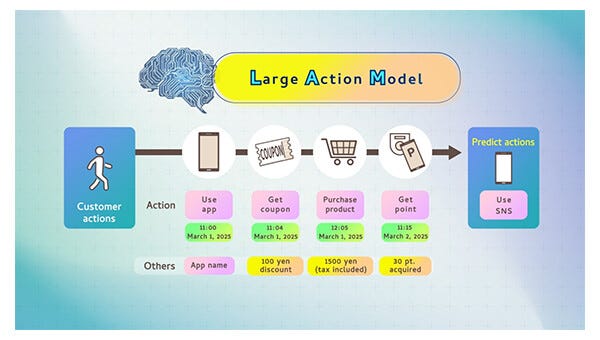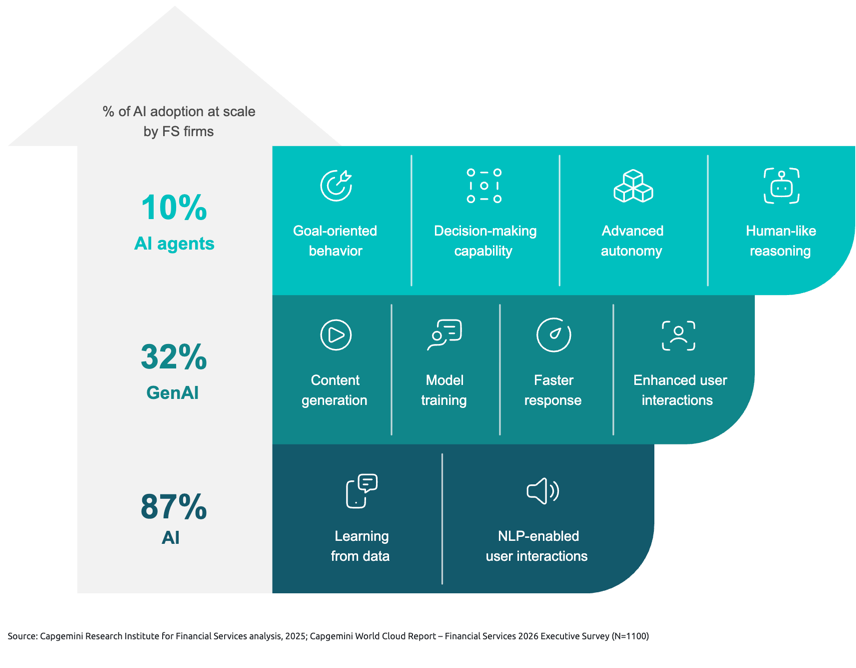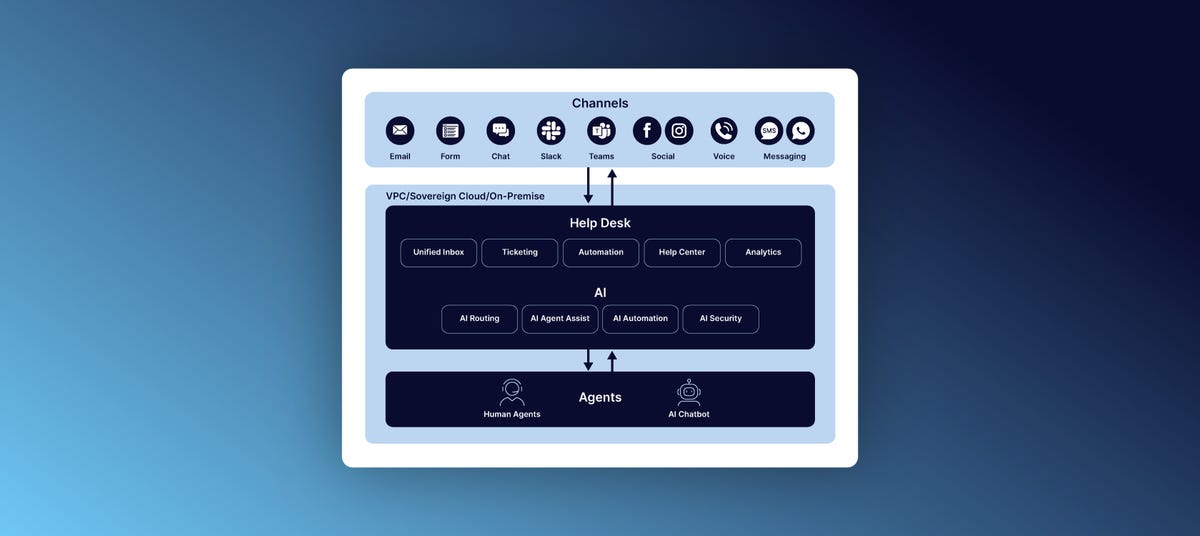AI Agents are Sprinting Ahead. Most CX Teams are Still Arguing About Pilots.
PLUS: Today’s tool shows how to get AI-powered support without throwing security and compliance in the bin.
Start every workday smarter. Spot AI opportunities faster. Become the go-to person on your team for what’s next.
📅 November 13, 2025 | ⏱️ 4-min read
Good Morning!
Every CX leader I speak to says the same thing: “We know AI matters. We’re still figuring out how.” The problem isn’t awareness anymore. The problem is execution, governance, and the courage to redesign how work gets done when machines stop being “assistants” and start acting like teammates.
Here’s what you need to know today.
🧠 NTT’s “Large Action Model” Doubles Telemarketing Conversions
NTT and NTT Docomo unveiled a new “Large Action Model” (LAM) that learns from time-series customer behavior across online and in-store touchpoints, structured in a 4W1H format (Who, When, Where, What, How). In trials, using LAM-driven 1:1 marketing reportedly increased telemarketing order rates for mobile and smart life services by up to 2x compared with existing approaches.
This is what real personalization looks like: not “Dear {First Name},” but precise decisions on offer, timing, channel, and content based on behavioral patterns. If your “personalization” is still segment-based messaging, you’re going to lose to brands that feed models with sequence data and let AI pick the next move in the journey.
💡 Wonderful Raises $100M To Scale Multilingual AI Service Agents
Israeli startup Wonderful raised $100M in a Series A led by Index Ventures to expand its multilingual enterprise AI agents, which already handle tens of thousands of complex customer interactions per day across voice, chat, and email. The company reports resolution rates above 80%, with most cases handled end-to-end without human agents, and is expanding rapidly across Europe and the Middle East.
Two signals here: first, investors are betting heavily that AI agents will take on full conversations, not just snippets of them. Second, the “multilingual-first” strategy tells you where the next competitive edge lies—global brands will prize agents that understand culture, regulation, and nuance, not only language. If your CX stack is still English-first, you’re training future churn in every other market.
Source: SiliconANGLE
🤖 Capgemini: Banks Push AI Agents Into Core Customer Journeys, But Only 10% At Scale
Capgemini’s new financial services report shows banks and insurers are aggressively moving customer-facing processes to AI agents: 75% cite customer service as a top target, followed by fraud detection (64%), loan processing (61%), and onboarding (59%). Yet only 10% of firms have deployed AI agents at scale, even as 80% sit in ideation or pilot phases and nearly half are creating new jobs specifically to supervise agents.
This is the pattern across industries: AI ambition is high, but operating models are stuck. The smartest CX leaders won’t just “add an agent”; they’ll design the org chart, governance, metrics, and incentives around a world where a portion of work is done by non-human colleagues. If you don’t define how humans supervise, override, and learn from agents, regulators and customers will define it for you.
📱 Optimizely: AI Discovery Is The New Front Door. 62% Of Marketers Know It, 27% Are Ready.
Optimizely released new research on “click-less journeys,” where AI platforms summarize, recommend, and decide for customers before they ever touch a brand’s website. The study finds 62% of marketers believe these journeys will be the norm within a year or already are, but only 27% feel well-prepared; 67% of consumers already use AI tools like ChatGPT, AI Overviews, or Perplexity for product research, and nearly a third have bought solely based on an AI-generated answer—with 87% of those buyers satisfied.
The So What
Most CX roadmaps still obsess over site journeys while the real battle is moving upstream into AI-generated summaries. If your content, data, and reviews aren’t optimized for how AI systems ingest and rank sources, you’re effectively invisible in the new shelf space. This isn’t SEO 2.0; it’s a strategic question: “How do we show up when the customer never visits us directly?”
🛠️ Tool of the Day: Deskpro Private
Deskpro launched Deskpro Private, a version of its help desk platform that keeps AI inside the customer’s own perimeter—running entirely within an AWS VPC, on-premises data center, or sovereign cloud. Teams can plug in their “AI of choice” (commercial, private, or open source models) using existing accounts and APIs, so sensitive support data never leaves the organization’s approved environment.
This directly attacks the excuse used by many regulated organizations: “We can’t use AI because of compliance.” You now have fewer places to hide. If you’re in financial services, healthcare, public sector, or aerospace and still running manual queues because of data fears, the real blocker may be decision paralysis and procurement comfort, not regulation.
📊 DCX AI Data Stat
In Deskpro’s new State of AI in Support Operations report, 92% of technology companies say they’re adopting AI in support, compared with just 58% of firms in regulated industries—a 34-point gap driven largely by security and compliance constraints. The same study shows 81% of organizations rate security as “critical” or “very important” in support tech decisions, and 74% expect focus on AI security to increase significantly over the next two years.
This isn’t a capability gap. It’s an architecture and leadership gap. Most CX leaders in regulated sectors want AI benefits but refuse to change deployment models, data architectures, or governance to make them possible. If you’re in that 58%, your competitive set isn’t “other regulated firms”; it’s the 92% who are quietly training better support experiences every single day.
The Signal 🔎
Today’s stories say the same thing in different ways: AI agents, discovery engines, and behavioral models are maturing faster than the organizations trying to control them. The winners won’t be the ones with the most pilots; they’ll be the ones willing to redesign data, governance, and teams around a future where AI is embedded in every interaction, from how customers find you to how problems get resolved.
Your 1-Minute Action Plan ⚡
Before your next leadership meeting, answer this honestly on a single slide:
Where are we already letting AI “act” on behalf of customers today? List every touchpoint: routing, self-service, outbound, fraud checks, content summaries.
Who owns the outcome when the AI is wrong? Name the role, not the department. If you can’t, you’ve found a risk gap.
What’s our first move to become “AI-visible”? Pick one product line and audit how it appears in AI summaries, reviews, and public data. Turn that into a quarterly metric.
If you can’t answer those three questions clearly, that’s your real CX priority tomorrow.









